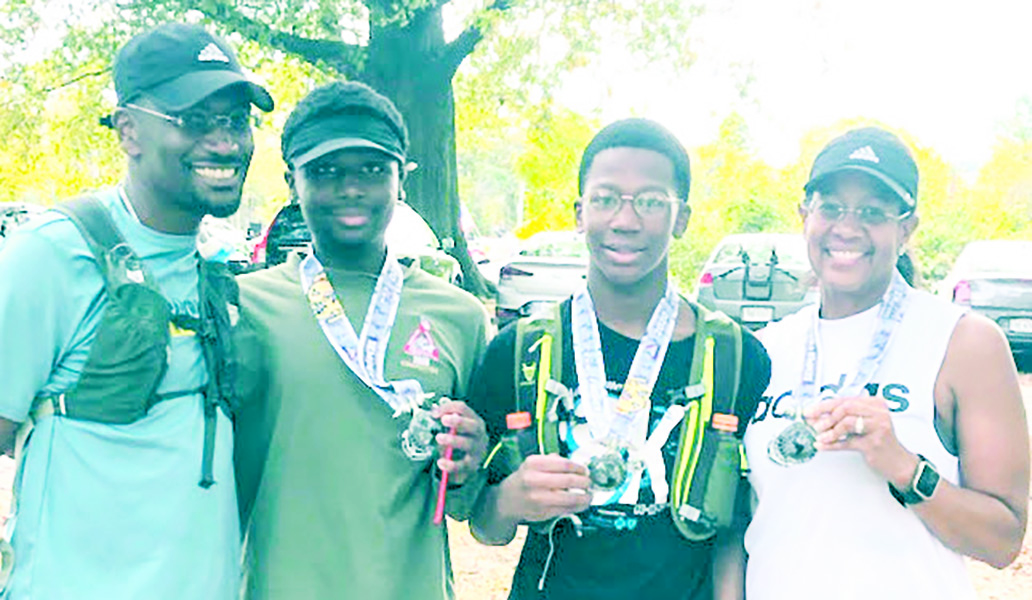Hampton Roads Community News
A New Journal and Guide Exclusive: Chesapeake Family’s Faith Plus New Medical Treatment Cure Son Of Sickle Cell Disease (SCD)

By Leonard E. Colvin
Chief Reporter
New Journal and Guide
These days Robert L. Davenport, III, 22, enjoys running marathons with his family, playing intramural lacrosse at his school and working hard to complete his challenging course work at the College of William and Mary.
But at one time, his body was impacted by the Sickle Cell Disease (SCD) and even basic life activities were restricted and made much more difficult.
As the world prepares for World Sickle Cell Day on June 19, Robert’s story of a full recovery from Sickle Cell Disease provides hope for thousands of persons for whom the disease has proven to be incurable since it was diagnosed in 1910.
Growing up, Robert had to choose athletic and other activities that would not cause painful crises that are common among individuals with Sickle Cell Disease. Because Robert was determined, he was able to earn his Black Belt in Tae Kwon Do in elementary school. But, distance running, track, and long trips often caused him to get sick or become extremely fatigued.
Robert is one of three children in the Davenport family. He has an older sister, Makaila, who recently graduated from law school, and a younger brother, Solon, who is a high school junior. The family currently resides in Chesapeake, VA.
Robert Davenport, III, affectionately known as “RDIII” is one of 100,000 mostly African-Americans in the U.S. whose lives are impaired because of SCD. He was diagnosed with the genetic disorder at birth. His mother, LaTricia, recalls the devastation that she felt upon his diagnosis.
“When the doctors at Walter Reed Medical Center told us about how sickle cell disease affects a person’s health, we were afraid and felt hopeless,” she said.
“We were told that the disease causes frequent painful crises, and slowly destroys the body’s organs. Some patients experience frequent infections, the spleen typically fails during childhood and patients may experience acute chest syndrome – which impacts the lungs and breathing, strokes and sometimes even blindness.
Robert’s father explained, “The only treatment that was available was a regimen of antibiotics to prevent infections, trans-cranial doppler scans – to detect brain clot formations, blood transfusions, and heavy narcotic pain medications. We prayed constantly that God would provide a cure for Robert and others plagued by this disease.”
The Davenport family was unfortunately very familiar with the disease. Robert’s grandfather, a former educator in the Norfolk Public School system, suffered with the disease his entire life and spent much time in the hospital battling the disease. His example of strength and faith helped the family to persevere and continue to believe that God would provide a cure.
A complicated medical SCD treatment for Robert began in 2020 when he underwent a new and promising procedure to rid his body of most of the debilitating and dangerous aspects of SCD.
Because he was under the age of 25 at the time, Robert was eligible for a clinical trial that involved a stem cell transplant from his brother Solon.
During a testimony before fellow congregants at Norfolk’s Shiloh Baptist Church, his father, Robert Davenport, Jr., translated a long scientific description called “HLA-identical sibling donor transplantation using alemtuzumab, low dose total-body irradiation, and sirolimus.”
According to Mr. Davenport, in layman terms, his son’s treatment involved “a stem cell transplant from his brother Solon. It involved blood transfusions, radiation, and one round of drugs to suppress his immune system and another round to help to prevent infection. And after the transplant – there was the waiting. Months of prayer, and waiting,” he said.
The treatment approach Robert underwent (nicknamed SUN) is one of two new “curative” procedures used to rid the body of the sickling of the red blood cells that identify SCD patients, according to Judy Anderson, Director of the Tidewater Sickle Cell Association, a position she has held for 46 years.
There are over 600 children in Hampton Roads who have SCD.
SCD causes the body’s red blood cells to form into a sickle shape that causes pain in the joints, anemia, and damages the organs in people with the malady.
Entire story is available on our digital edition. Click here to sign up.














